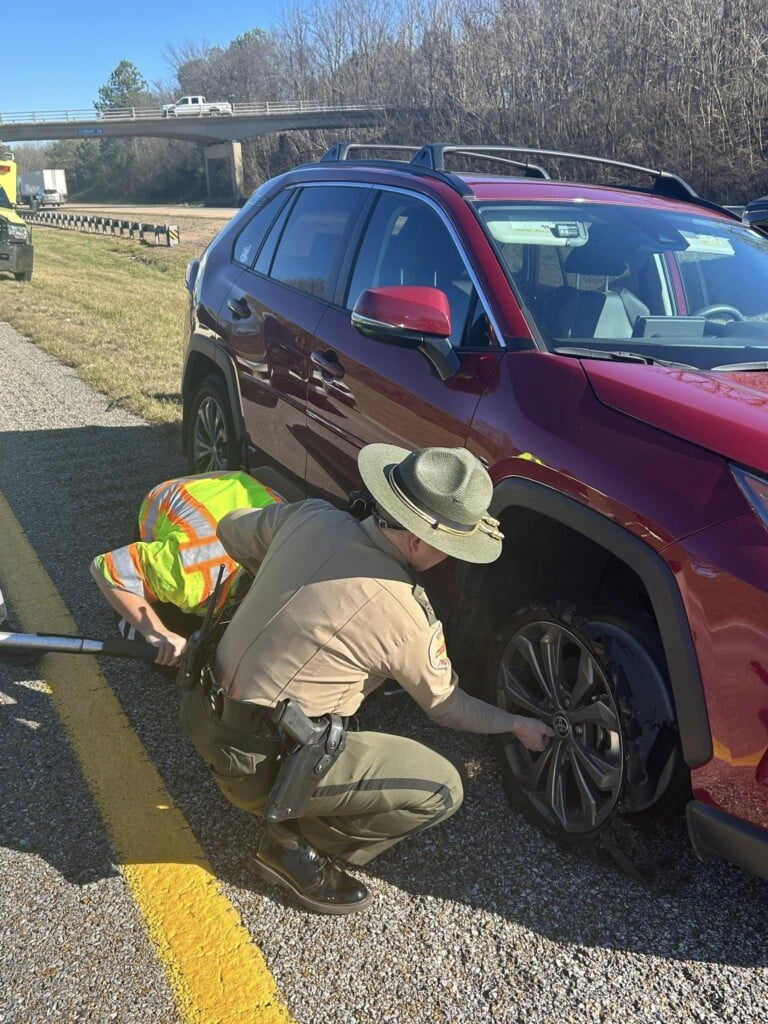The number of non-criminal detainees arrested by ICE has surged by 2,000% under Trump. These charts show who’s in detention.
The number of immigration detainees without criminal records who are held in federal detention centers after getting arrested by Immigration and Customs Enforcement has increased by over 2,000% since the start of the second Trump administration in January, according to official government data.
The statistics, published online by ICE as part of a transparency requirement mandated by Congress, illustrate the wide-ranging scope of President Trump’s mass deportation campaign.
On Nov. 16, the government figures show, ICE was holding 65,135 people in detention facilities throughout the U.S., the highest level ever publicly reported by the agency, which was created in 2003 following the 9/11 terrorist attacks. CBS News first reported the record detention levels earlier this month, citing internal data.
The official figures indicate that 30,986 – or 48% — of the ICE detainees in custody as of Nov. 16 lacked any criminal charges or convictions in the U.S. and were being held solely because of civil violations of U.S. immigration law. ICE calls them “immigration violators.”
Those with criminal convictions represented about 26%, or 17,171, of all ICE detainees on Nov. 16. The data show 16,978 individuals — another 26% of ICE’s detainee population — had criminal charges.
The statistics released by ICE do not specify the severity and nature of the charges or convictions for the detainees with criminal histories. They could range from violent or serious felonies, to misdemeanors and immigration-related crimes, such as illegal re-entry into the U.S.
Illegal presence in the U.S., including after overstaying a visa, is not a crime by itself and is generally handled as a civil matter in immigration court. While illegal entry into the U.S. is a federal misdemeanor crime for a first-time offense with a 5-year statute of limitations, those accused of doing so typically have their cases treated as civil immigration violations, absent additional criminal activity.
While all three categories of ICE detainees — immigration violators, those with criminal charges and those with criminal convictions — have grown under the second Trump administration, the statistics published by the agency indicate the non-criminal group has seen the most rapid and pronounced rise.
ICE’s detention population includes individuals arrested by that agency, typically in communities or jails inside of the U.S., as well as detainees transferred by Customs and Border Protection. Most detainees initially arrested by CBP, most commonly along the U.S.-Mexico border, historically have lacked criminal histories in the U.S. because many have not lived in the country for significant periods or at all.
As of Nov. 16, 52,510 of ICE’s detainees had been initially taken into custody by that agency, while 12,625 had been arrested by CBP.
When focusing solely on ICE detainees initially arrested by that agency — and not CBP — the figures show a 2,143% spike in non-criminal detainees from Jan. 26 (945) to Nov. 16 (21,194). The number of detainees initially arrested by ICE who have convictions or criminal charges increased by 73% and 226%, respectively, during that same time period, according to the ICE data.
The latest figures also indicate that for the first time, non-criminal detainees arrested by ICE outnumber those with criminal convictions. From Sept. 21 to Nov. 16, non-criminal detainees increased by about a third, while the number of detained with criminal convictions remained nearly flat.
The numbers underscore that while the Trump administration has said its deportation effort would mainly focus on criminals deemed to be “the worst of the worst,” a growing share of those swept up under its crackdown are immigrants accused of living in the U.S. illegally but who otherwise lack any criminal history.
At the same time, some senior Trump administration officials, including border czar Tom Homan and acting ICE director Todd Lyons, have said anyone encountered by immigration authorities and found to be in the U.S. illegally will be arrested, even if they’re not the intended target of an operation. Those so-called “collateral arrests” had been largely banned under Biden-era rules the Trump administration scrapped.
The government has the legal authority to arrest, detain and process for deportation anyone suspected of violating U.S. immigration law, irrespective of any criminal activity. But some of those individuals may be eligible for forms of legal relief, such as asylum, that can stall or halt their deportation.
In a statement, Department of Homeland Security spokeswoman Tricia McLaughlin said the administration is “targeting the worst of the worst criminal illegal aliens—including murderers, rapists, gang members, pedophiles, and terrorists.” She said 70% of those arrested by ICE had criminal charges or convictions, but did not specify a timeframe or offer a breakdown to support the percentage.
McLaughlin also said detainees listed as non-criminals could have warrants or criminal histories outside of the U.S., or otherwise pose a threat to national security. But DHS has not released data showing how many people fall into those categories.






